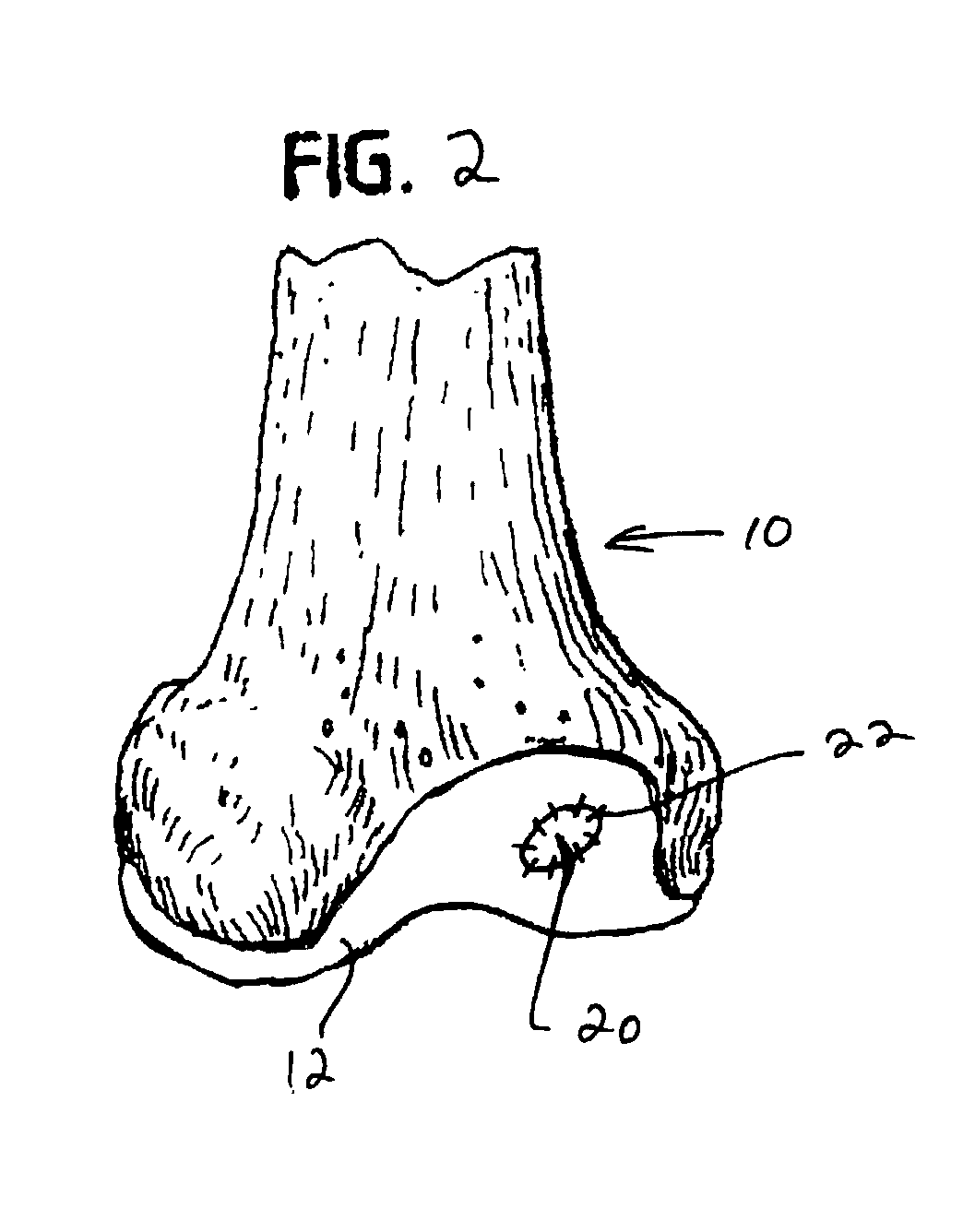Collagen carrier of therapeutic genetic material, and method
a technology of genetic material and collagen, applied in the field of collagen carrier of therapeutic genetic material, and method, can solve the problems of undesirable use of gags in the form of pgs, inability to provide this capability, and material thickness too thin, and is not particularly easy to us
- Summary
- Abstract
- Description
- Claims
- Application Information
AI Technical Summary
Problems solved by technology
Method used
Image
Examples
example 2
[0088] Porcine rinds are ground into 10 ml pieces, then dehydrated by air-drying in a 25.degree. C. air flow to a residual water content lower than 15% by weight. The dehydrated material is defatted by treatment with an excess of methylene chloride / methanol (87%:13% by weight) to a fat content of lower than 2%. The solvents are then evaporated.
[0089] The dry, defatted rinds are treated with an excess of water to form a mixture having a collagen content of about 4-7% by weight.
[0090] The mixture then is subjected to alkali treatment by adding sodium hydroxide to form a 4% by weight sodium hydroxide solution, for at least four hours at 20.degree. C. with stirring. The mixture then is washed with water to a pH of 8.4.
[0091] The mixture then is subjected to acidic treatment by addition of hydrochloric acid to form a 3.2% hydrochloric acid solution, for at least 2 hours at 20.degree. C. with stirring. The mixture then is washed with water to a pH of 2.5.
[0092] Water is added to the treat...
example 3
[0093] Porcine rinds are ground into 10 ml pieces, then dehydrated by air-drying in a 25.degree. C. air flow to a residual water content of lower then 15% by weight.
[0094] The dehydrated rinds are subject to defatting by treatment with an excess of methylene chloride / methanole (87%:13% by weight) to a fat content of lower than 2%. The solvents then are evaporated.
[0095] The dry, defatted rinds are treated with an excess of water to form a mixture having a collagen content of about 4-7% by weight. If necessary, additional water is added to the treated rinds to form a mixture having a solids content of about 4% by weight and the mixture is homogenized into a gel-like dough.
[0096] 10 kg of 4M guanidine hydrochloride solution is added per kg of gel-like dough to form a mixture which is shaken at 4.degree. C. for 24 hours. The mixture then is extensively washed with water and the residual collagen is filtered.
[0097] The mixture then is subjected to pepsin digestion by adding pepsin to th...
example 4
[0098] Deep frozen porcine cartilage is thawed over a period of 72 hours at 6.degree. C. The thawed cartilage is ground to a size of about 3 mm. Water is added to the ground cartilage to form a mixture having a solids content of 4% by weight, and homogenized into a gel-like dough. 10 kg 4M guanidine hydrochloride solution is added per kg dough, and shaken at 4.degree. C. for 24 hours. The thus-treated material is extensively washed with water, and the residual collagen is filtered. To the filtered collagen is added pepsin at a pepsin:collagen ratio of 1:10 w / w and 0.1M lactic acid to a pH of 2.5, and shaken at 4.degree. C. for 48 hours so as to dissolve the collagen. The pH of the mixture is increased to about 7 with 2M sodium hydroxide, and collagen is precipitated by adding sodium chloride to a final content of 0.7M. The precipitated collagen is collected by centrifugation, and sodium chloride is washed out at pH 7 with water.
[0099] A hydrochloric acid in water solution at pH 3.3 ...
PUM
| Property | Measurement | Unit |
|---|---|---|
| Adhesion strength | aaaaa | aaaaa |
| Area | aaaaa | aaaaa |
| Nucleic acid sequence | aaaaa | aaaaa |
Abstract
Description
Claims
Application Information
 Login to View More
Login to View More - R&D
- Intellectual Property
- Life Sciences
- Materials
- Tech Scout
- Unparalleled Data Quality
- Higher Quality Content
- 60% Fewer Hallucinations
Browse by: Latest US Patents, China's latest patents, Technical Efficacy Thesaurus, Application Domain, Technology Topic, Popular Technical Reports.
© 2025 PatSnap. All rights reserved.Legal|Privacy policy|Modern Slavery Act Transparency Statement|Sitemap|About US| Contact US: help@patsnap.com



